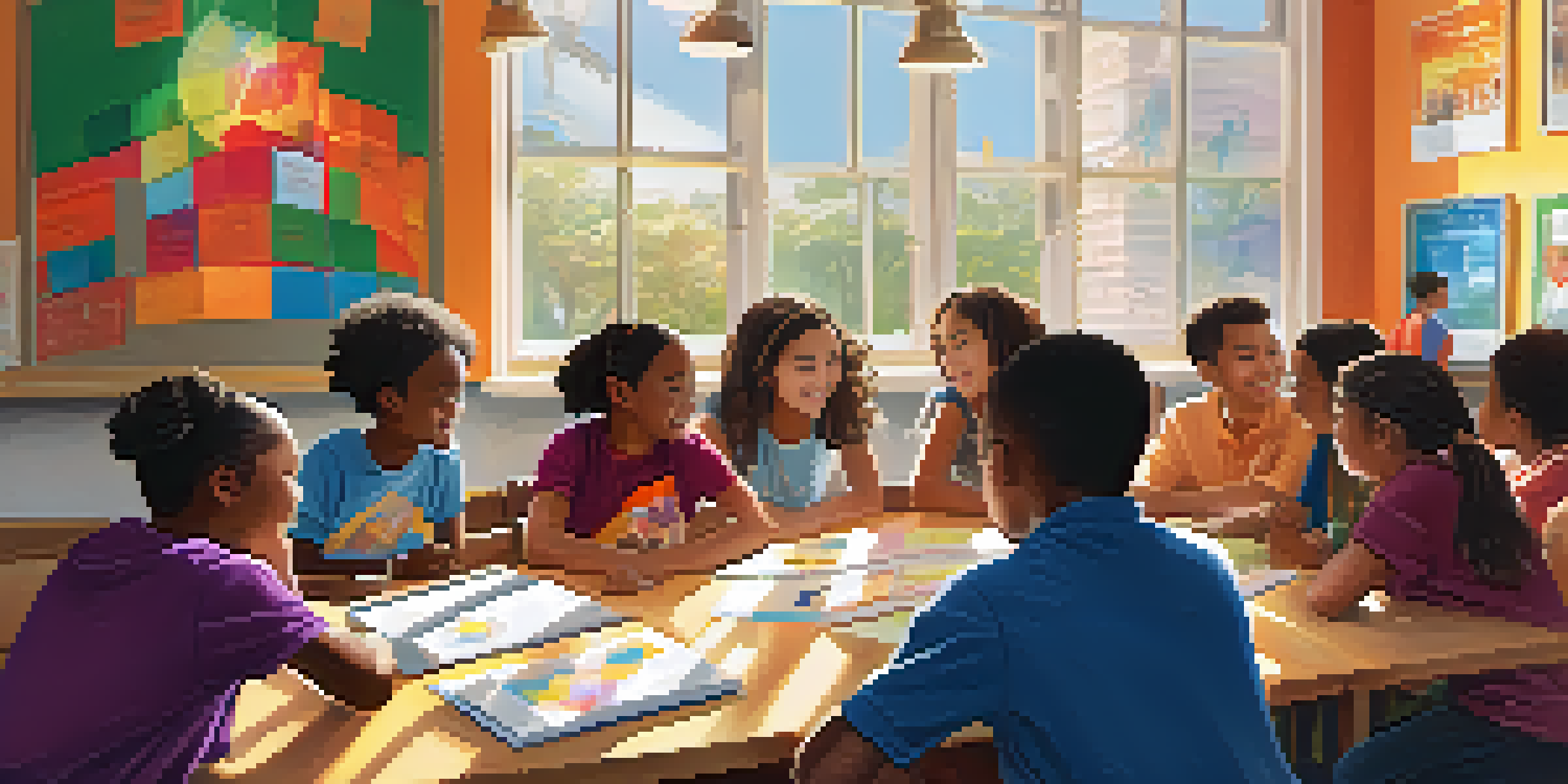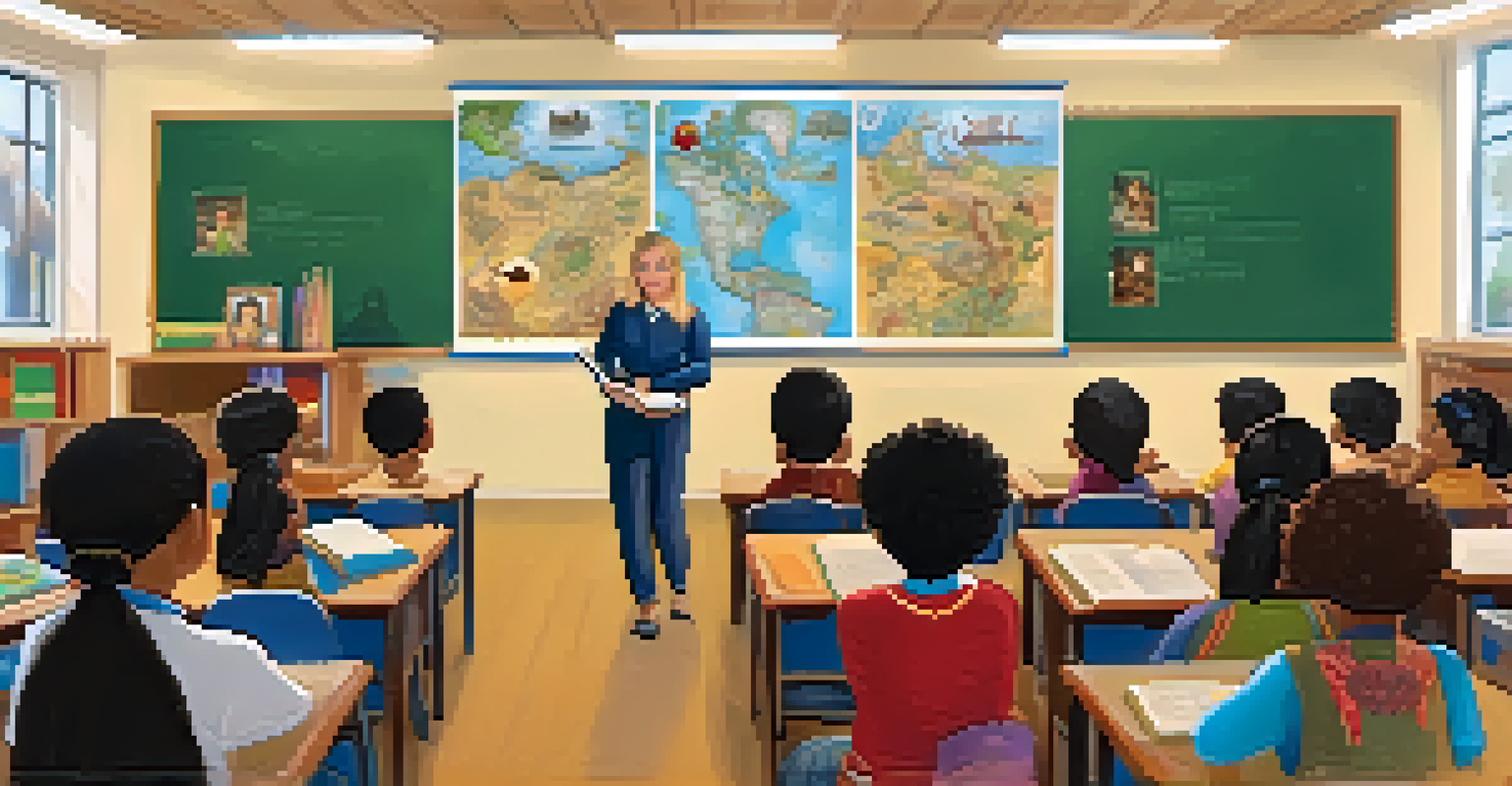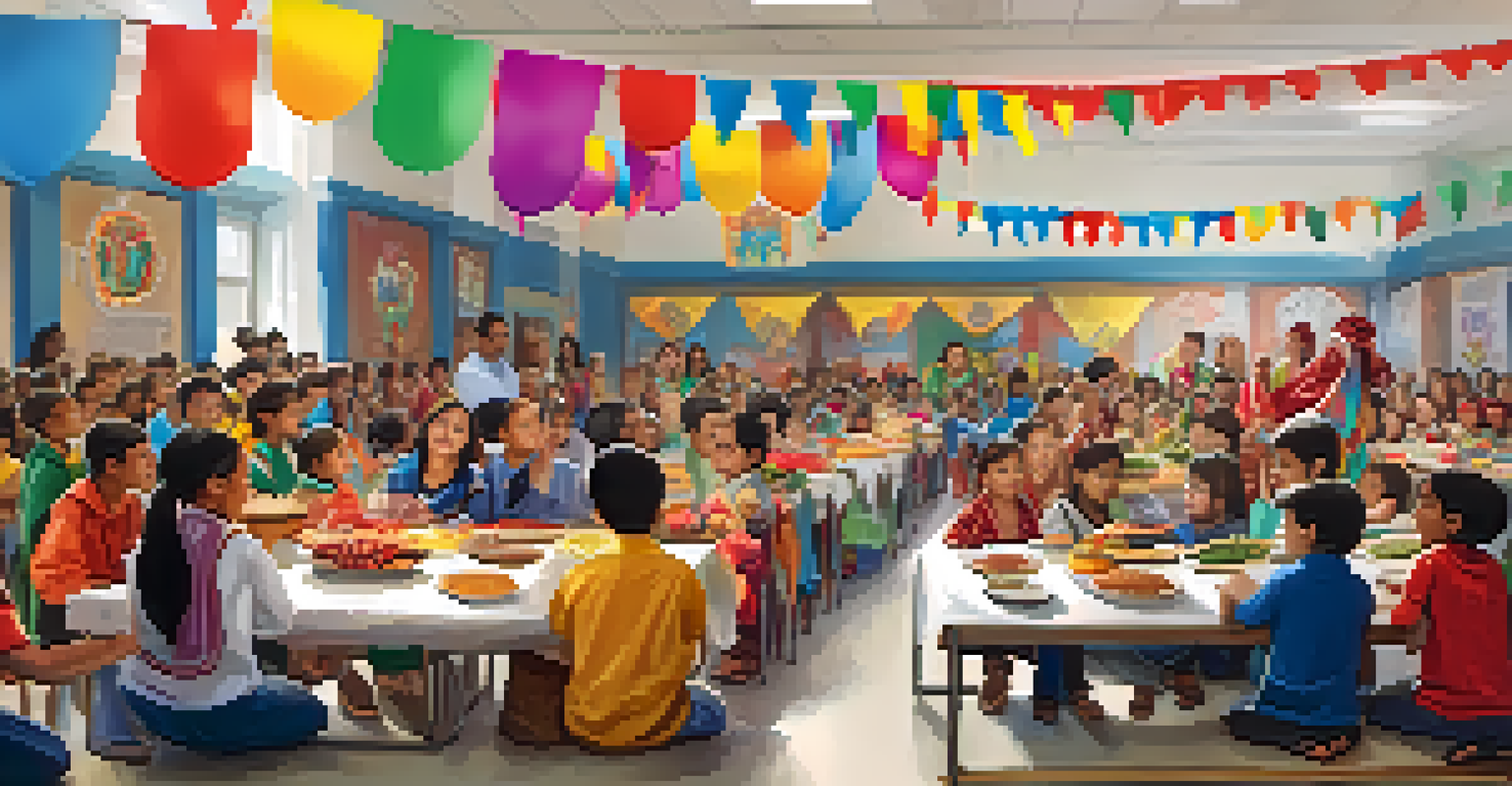Exploring Global Cultures Through Culturally Responsive Teaching

Understanding Culturally Responsive Teaching
Culturally responsive teaching (CRT) is an educational approach that recognizes and values the diverse cultural backgrounds of students. It aims to create an inclusive environment where all students feel seen and respected. By integrating different cultural perspectives into the curriculum, educators can foster engagement and improve learning outcomes.
Education is the most powerful weapon which you can use to change the world.
At its core, CRT encourages teachers to adapt their teaching methods to reflect the cultural contexts of their students. This means going beyond a one-size-fits-all approach and tailoring lessons that resonate with the rich tapestry of students' lives. By doing so, educators not only validate students' identities but also enhance their motivation to learn.
For instance, incorporating literature from various cultures or discussing historical events through different cultural lenses can make lessons more relatable. When students see their own experiences reflected in the classroom, they are more likely to participate actively and connect with the material.
The Importance of Cultural Awareness in Education
Cultural awareness is crucial in education as it enables teachers to understand the unique backgrounds of their students. This understanding is the foundation for building strong relationships and creating a supportive classroom environment. When teachers are culturally aware, they can anticipate challenges and address them proactively, leading to a more harmonious learning experience.

Moreover, cultural awareness helps educators recognize their own biases and assumptions. By reflecting on their perspectives, teachers can create a more equitable classroom that prioritizes the needs of all students. This reflection is essential for fostering an inclusive atmosphere where every student feels valued.
Embrace Cultural Diversity in Teaching
Culturally responsive teaching promotes an inclusive environment that values and reflects students' diverse cultural backgrounds.
For example, a teacher who acknowledges the significance of cultural holidays can create lessons that celebrate diversity, allowing students to share their traditions. This not only enriches the curriculum but also encourages students to learn from one another, fostering a sense of community.
Building Relationships Through Cultural Connections
Building meaningful relationships with students involves understanding their cultural backgrounds. By taking the time to learn about students' cultures, teachers can create connections that go beyond academics. These relationships can significantly impact students' confidence and willingness to engage in classroom discussions.
The function of education is to teach one to think intensively and to think critically. Intelligence plus character – that is the goal of true education.
Teachers can cultivate these connections by incorporating cultural elements into their lessons and classroom activities. For instance, inviting guest speakers from diverse backgrounds or organizing cultural exchange projects can provide students with firsthand experiences. These activities allow students to see the relevance of their studies in a global context.
When students feel a sense of belonging, they are more likely to share their thoughts and ideas openly. This open communication not only enhances classroom dynamics but also promotes a culture of respect and empathy among peers.
Incorporating Diverse Perspectives in Curriculum Design
An effective way to implement culturally responsive teaching is by incorporating diverse perspectives into curriculum design. This involves integrating materials from various cultures and viewpoints to create a rich learning experience. By doing so, educators can challenge dominant narratives and provide students with a broader understanding of the world.
For example, a history lesson could include the perspectives of different ethnic groups involved in a specific event. This approach not only enriches the content but also encourages students to think critically about the complexities of history. It helps them appreciate the multifaceted nature of cultural narratives.
Build Relationships Through Culture
Understanding students' cultural backgrounds fosters meaningful relationships that enhance engagement and confidence in the classroom.
Additionally, when students see their cultures represented in the curriculum, it affirms their identities and validates their experiences. This representation fosters pride and encourages students to engage more deeply with the material, leading to enhanced learning outcomes.
Creating an Inclusive Classroom Environment
An inclusive classroom environment is essential for culturally responsive teaching. This means creating a space where all students feel safe, respected, and valued for who they are. Teachers can achieve this by establishing clear expectations for behavior and promoting respect for diversity.
Incorporating cooperative learning strategies can also enhance inclusivity. By encouraging students to work together on projects that celebrate their cultural backgrounds, educators can foster teamwork and mutual respect. This collaborative approach not only enriches the learning experience but also helps students build friendships across cultural lines.
Moreover, celebrating cultural diversity through events, such as multicultural days or themed weeks, can further enhance the classroom atmosphere. These activities allow students to share their heritage and learn from one another, creating a vibrant and dynamic learning environment.
Assessment and Feedback in Culturally Responsive Teaching
Assessment in culturally responsive teaching should reflect the diverse backgrounds of students. Traditional assessment methods may not accurately capture the knowledge and skills of all learners, particularly those from different cultural contexts. Therefore, it’s essential to use a variety of assessment techniques that allow for multiple expressions of understanding.
For instance, portfolios, presentations, and project-based assessments can provide students with opportunities to demonstrate their learning in ways that resonate with their cultural identities. This flexibility not only acknowledges diverse learning styles but also empowers students to take ownership of their education.
Continuous Growth for Educators
Ongoing professional development equips teachers with the necessary skills and knowledge to implement culturally responsive teaching effectively.
Furthermore, providing constructive feedback that respects cultural sensitivities is crucial. Teachers should be mindful of how their feedback is delivered, ensuring it is supportive and encourages growth. By nurturing a positive feedback loop, educators can help students thrive academically and socially.
The Role of Continuous Professional Development
Continuous professional development is vital for educators striving to implement culturally responsive teaching effectively. Teachers need ongoing training and resources to stay updated on best practices and cultural competency. This professional growth ensures that educators are well-equipped to meet the diverse needs of their students.
Participating in workshops, conferences, and collaborative learning communities can significantly enhance teachers' understanding of cultural responsiveness. These platforms provide opportunities for educators to share experiences, strategies, and insights that can be applied in their classrooms.

Moreover, engaging with community organizations and cultural groups can offer valuable perspectives that inform teaching practices. By fostering partnerships with these entities, educators can enhance their cultural knowledge and enrich their curriculum, ultimately benefiting their students.